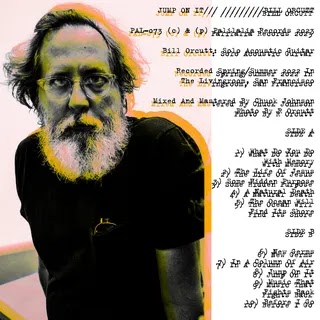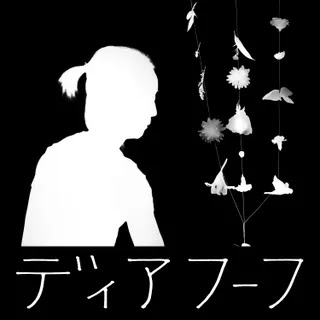The veteran British composer, improviser, author, and scholar assembles a dreamlike, mercurial album of sonic collage that doubles as a philosophical treatise on sound and memory.
“Music is a memory machine,” David Toop wrote in The Quietus in May. The British composer, improviser, author, and scholar was talking about the COVID-19-related deaths of fellow experimental-music elders, but that declaration has the ring of a time-honored maxim, and it’s about as close as one could come to summarizing a 50-year career that ranges from the esoteric pages of The Wire to a pioneering book on rap, from Brian Eno’s Obscure Records to Top of the Pops.
The line echoes Roger Ebert’s famous aphorism about movies and empathy, and it shows why Toop is as distinguished in his recondite sphere as Ebert was in his popular one: They both believe their chosen art form has a specific, morally weighted, urgently human function. A veteran global field recorder, Toop is as much a conservationist as an ethnomusicologist, and the thousands of baroque intellectual inquiries he has raised might be said to rest on one burningly clear, almost instinctive question: How much of this world can be perceived and saved?
Apparition Paintings, a new album that’s great both for newcomers to Toop and to sound collage in general, is more than just canning audio preserves for the long winter. For that, turn to Field Recording and Fox Spirits, also new, from the same label. The illustrated book features dozens of pages of dizzying Toop talk with Room40 label head Lawrence English; an accompanying CD amounts to a sonic biography comprising unvarnished recordings (a Beijing street in 2005, a certain wasp in 1971), improvisations on the kinds of sculptural instruments people are always inviting Toop to play, and other raw materials that form his compositions. There are also conversations with subjects as diverse as Ornette Coleman and Toop’s grandfather, who said, as the cassette tape rolled in 1979, “My memory is not what it used to be, David,” succinctly stating the impetus behind Toop’s prodigious recording life.
If the phrase “sound collage” makes you despair of listening to someone untangling a mess of wire hangers while a kettle whistles in the next room, that’s fair. There is a lot of sound collage like that, which counts on the listener’s imaginative labor, the idea of boredom as a kind of medal, or the fear of not getting something other people claim to get. But while layer upon layer of arcane knowledge encrusts these songs—“‘Apparition painting’ is the term used to describe a certain type of ancient Chinese painting of the twelfth and thirteenth centuries,” a typical Toop sentence might begin—the album is strangely accessible and well rounded, full of rich, tactile environments that evoke vivid spaces and nothing unfinished or haphazard.
Throughout Apparition Paintings, which features contributions from Elaine Mitchener, Keiko Yamamoto, Rie Nakajima, and others, Toop gathers live instrumentation, field recordings, percussive sounds, and non-English vocalizations, then pries them from their frames of reference and fuses them into mercurial, dreamlike unities. Their surfaces are scored with the eclectic elements of Toop’s background, which includes recording shamans in rainforests, cracking the U.S. and UK charts in the Flying Lizards with a skronky no-wave cover of Barrett Strong’s “Money,” releasing pioneering ambient albums on Brian Eno’s label, and writing books that trace the genre all the way back to Debussy.
The genuinely poetic titles Toop plucks from classic books and films speak of relatable emotional contents, though it’s easy to read too much or too little into them: “Maybe these titles, torn as they are from cinema screens and the pages of literature and philosophy, give a feeling of romantic or sexual love or some dark pool of nostalgia but that’s not it,” Toop ponders, unwinding the sentence for almost 300 words before coming to the heart of the matter: “All I desire is what already exists or once existed, now falling asleep outside the world.”
As for those teeming contents, where to begin? There are lustrous waves of bass and high-desert guitars in “You could touch him but he wasn’t there,” dubby warps and wobbles in “Tiny human figurines made from sand. If you held these to your ear, you heard soft sweet music,” and tuned filter snaps pelting bells on “A ghost traveling half a mile from its own shape.” There are stereo pops on eerie clouds, glimmering jazz chords, and sprays of vocal fricatives. There are bamboo flutes and snail-shell whistles, all manner of shoes and ships and sealing wax, and moments of clarifying force: Huge power chords divulge drones in “She fell asleep somewhere outside the world,” and “All I desire” is a big, glossy chillwave number that would do Toro y Moi proud.
It figures that the record’s starkest pop moment would evoke a genre chiefly concerned with memory—its sweetness, its pain, its lies, its decay. Like human minds, Toop’s music is profoundly antilinear, and the academic façade conceals a decidedly visceral impulse: “Time moving brings us closer to death and a lot of music is time moving,” Toop tells English in the book. “I love that feeling but I also love to work with temporalities of suspension and scattering, circularity and stillness.” Apparition Paintings is evidence of a journey in sound beyond the technical, theoretical, or even spiritual realm, where many a seeker fetches up, onto a rarified but primal perch where everything that falls asleep outside the world awakes. It would take too many lifetimes to figure out what it all means, but listening and remembering is meaning enough.
















0 comments:
Post a Comment